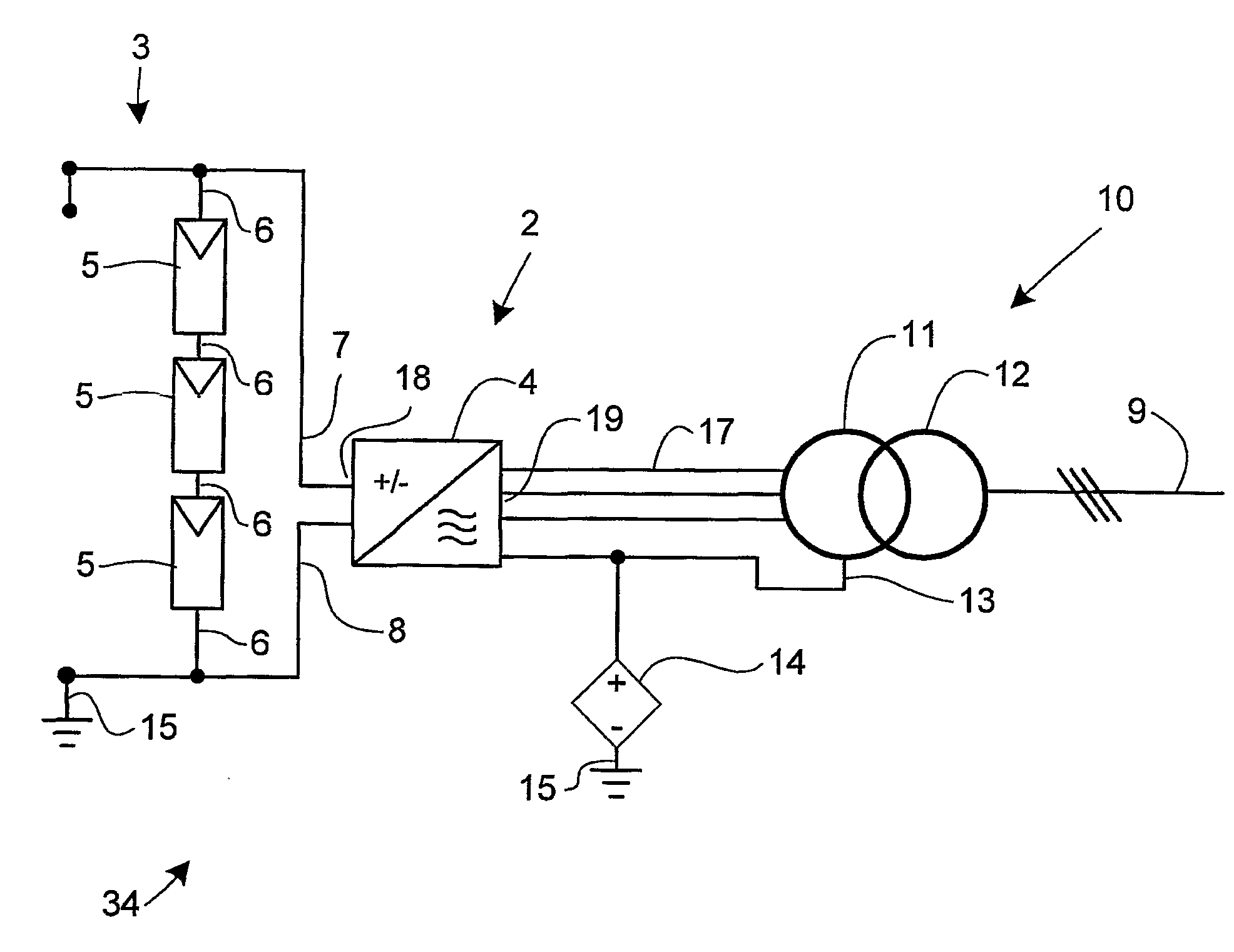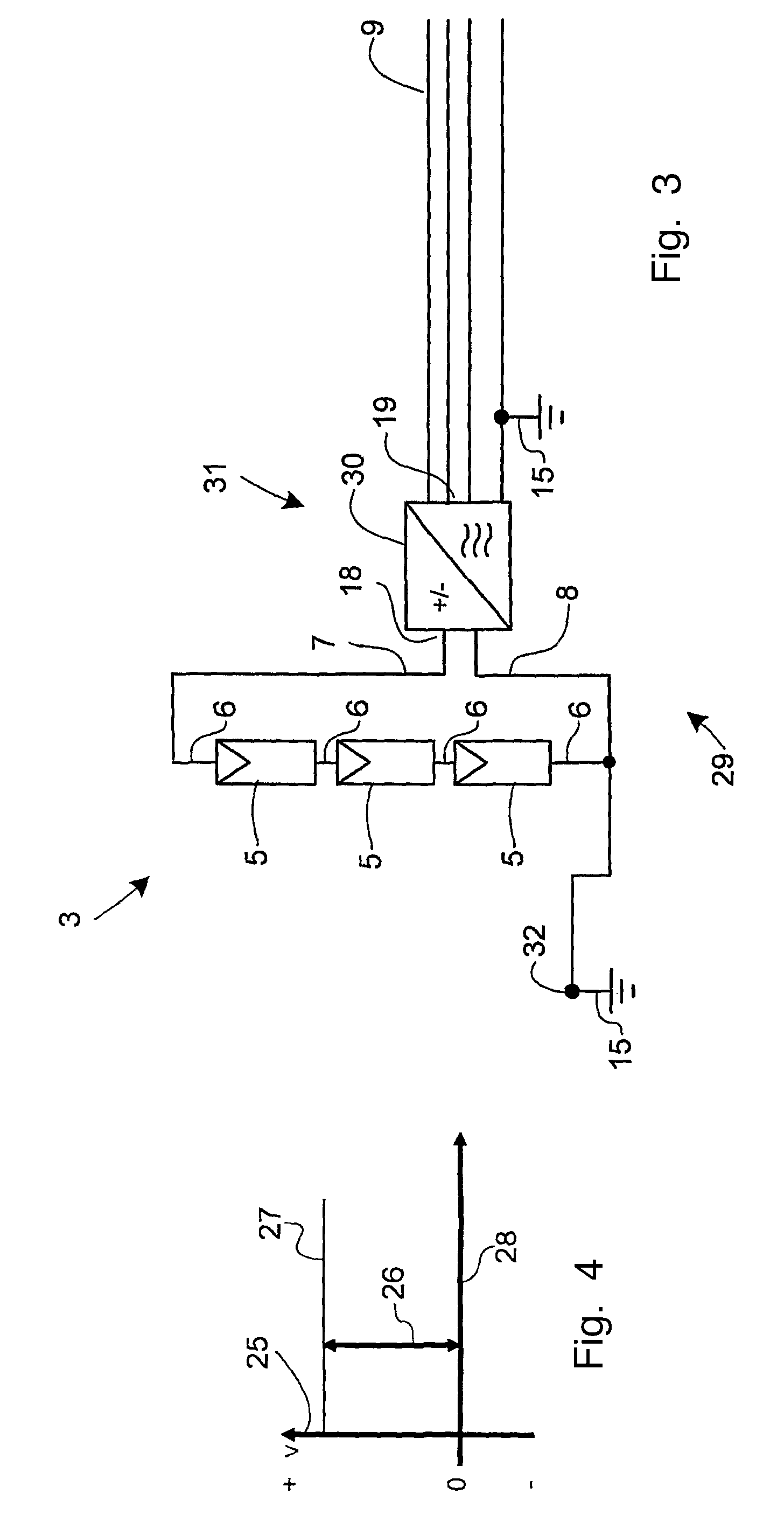Photovoltaic power plant
a photovoltaic power plant and photovoltaic technology, applied in the direction of dc-ac conversion without reversal, transportation and packaging, dc network circuit arrangement, etc., can solve the problem of detection of isolation faults in the power plant, and achieve the effect of loss of efficiency
- Summary
- Abstract
- Description
- Claims
- Application Information
AI Technical Summary
Benefits of technology
Problems solved by technology
Method used
Image
Examples
first embodiment
[0061]The advantages of this embodiment are similar to the advantages already given for the first embodiment discussed above. In addition, it will be seen that there is no requirement to ground the appropriate input of each inverter 4, 38 individually since the offset voltage source 14 controls the voltage relative to ground on the isolated AC side of all the inverters 4, 38 to a reference point. This reference point could be set to any desired potential between positive or negative side of the PV string and thus compensate for different problems associated with different PV cell type discussed above.
[0062]The reference point could also be made programmable, that is it can be varied according to the type of PV string being used, or by some other criteria. It also could be set as a function of time and thus it would be possible to changed the settings of the offset voltage during the day if required.
[0063]Since the offset voltage is being produced at a single point in the circuit, an...
third embodiment
[0065]FIG. 10 shows the invention. This is similar to the embodiment illustrated in FIG. 7, but with the addition of a second PV generator 2, and with each PV string 3 comprising four PV modules 5 connected in series. The offset voltage source 14 comprises two offset PV modules 16 connected in series. The offset PV modules 16 are similar in construction to the PV modules 5 of the PV generators 2.
[0066]The number of offset PV modules 16 equals half the number of PV modules 5 in a PV string 3, wherefore the output voltage of the offset voltage source 14—the offset voltage—equals approximately half of the PV string DC voltages. Most of the time, the offset voltage source 14 is less loaded than the PV strings, wherefore most of the time, the offset voltage will be a little higher than half of the PV string DC voltages.
[0067]Instead of using an equalising circuit, the DC potential at the DC input 18 of the inverters 4 may be controlled actively by the inverter control circuits. This is f...
PUM
 Login to View More
Login to View More Abstract
Description
Claims
Application Information
 Login to View More
Login to View More - R&D
- Intellectual Property
- Life Sciences
- Materials
- Tech Scout
- Unparalleled Data Quality
- Higher Quality Content
- 60% Fewer Hallucinations
Browse by: Latest US Patents, China's latest patents, Technical Efficacy Thesaurus, Application Domain, Technology Topic, Popular Technical Reports.
© 2025 PatSnap. All rights reserved.Legal|Privacy policy|Modern Slavery Act Transparency Statement|Sitemap|About US| Contact US: help@patsnap.com



